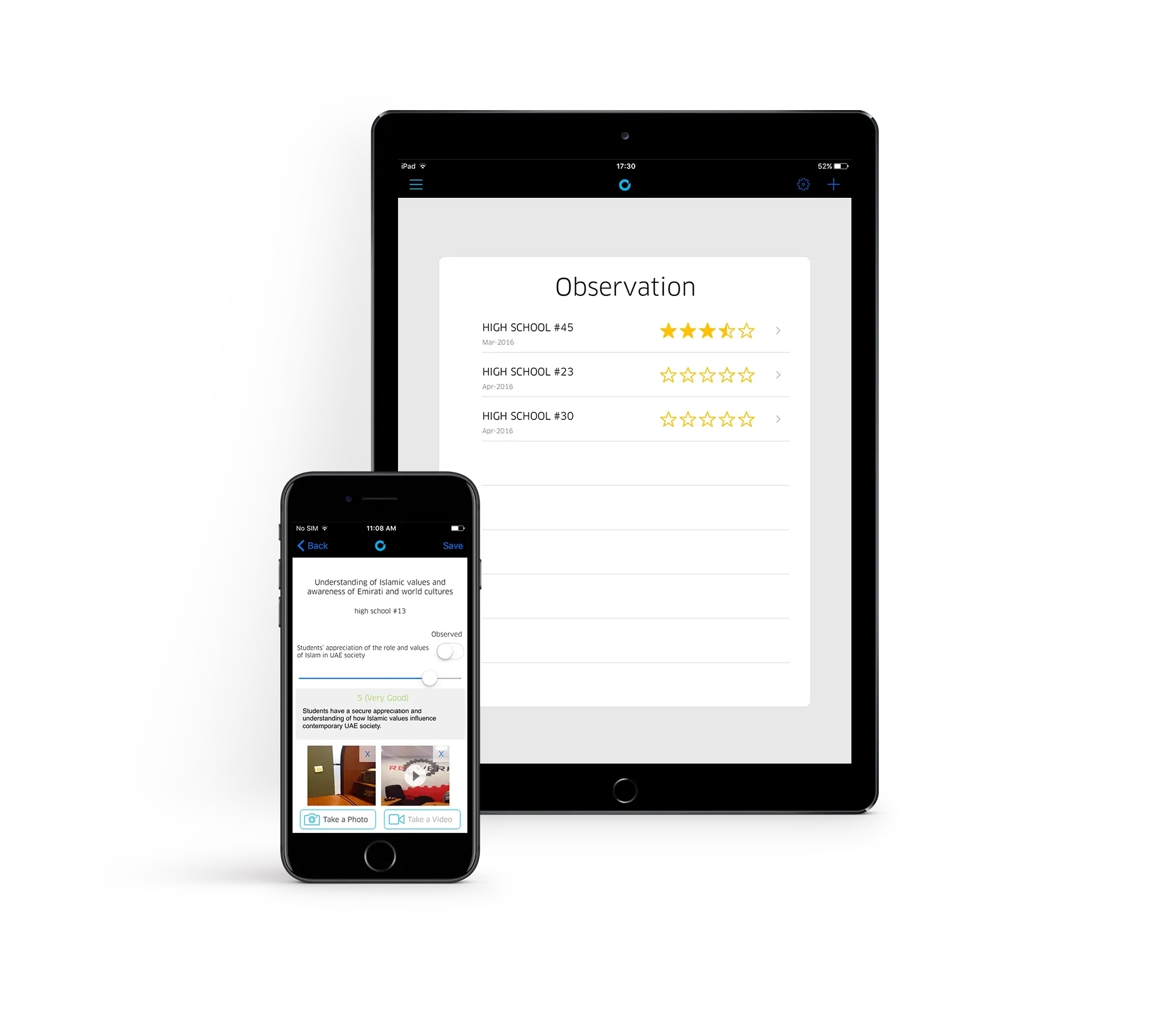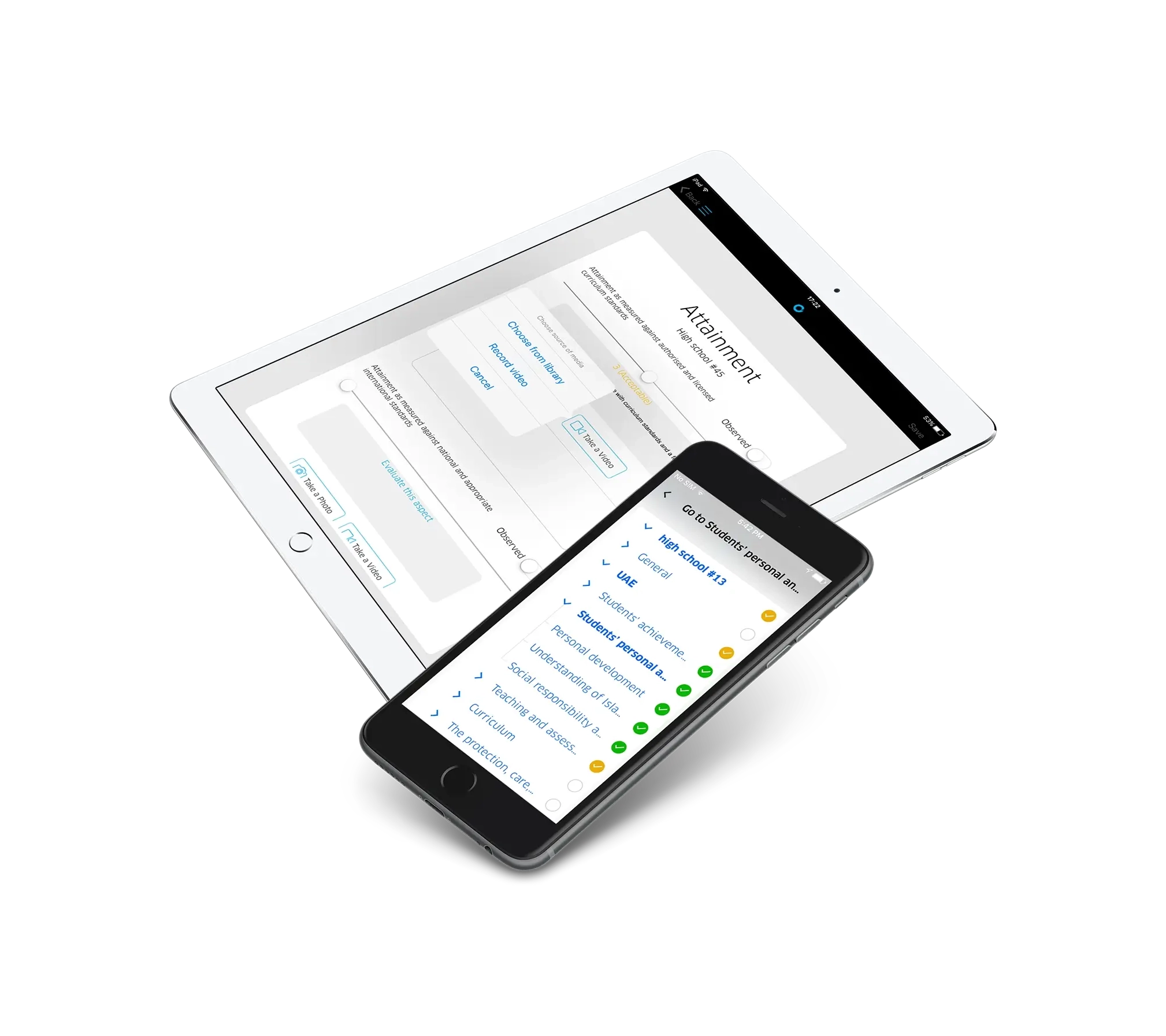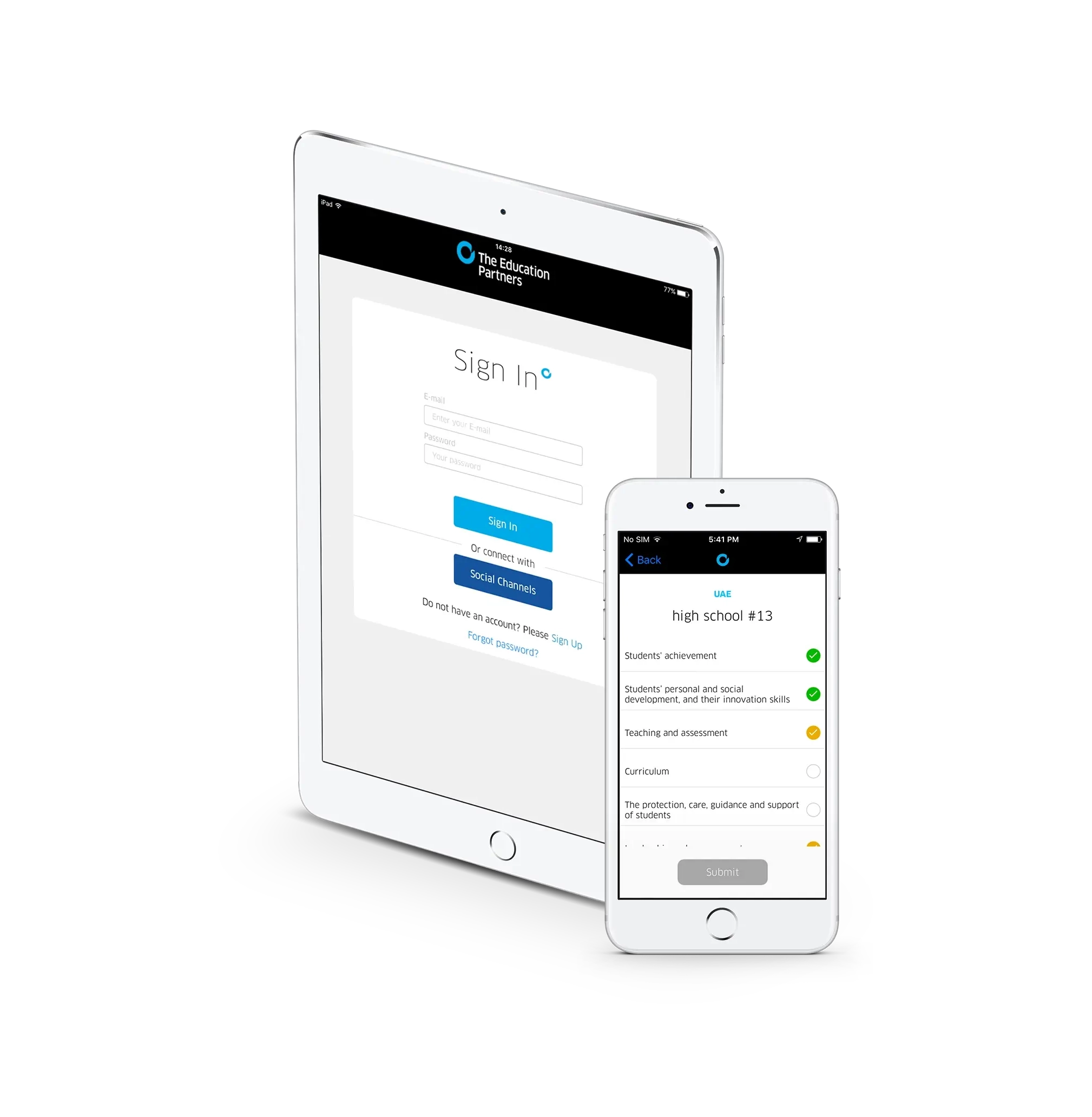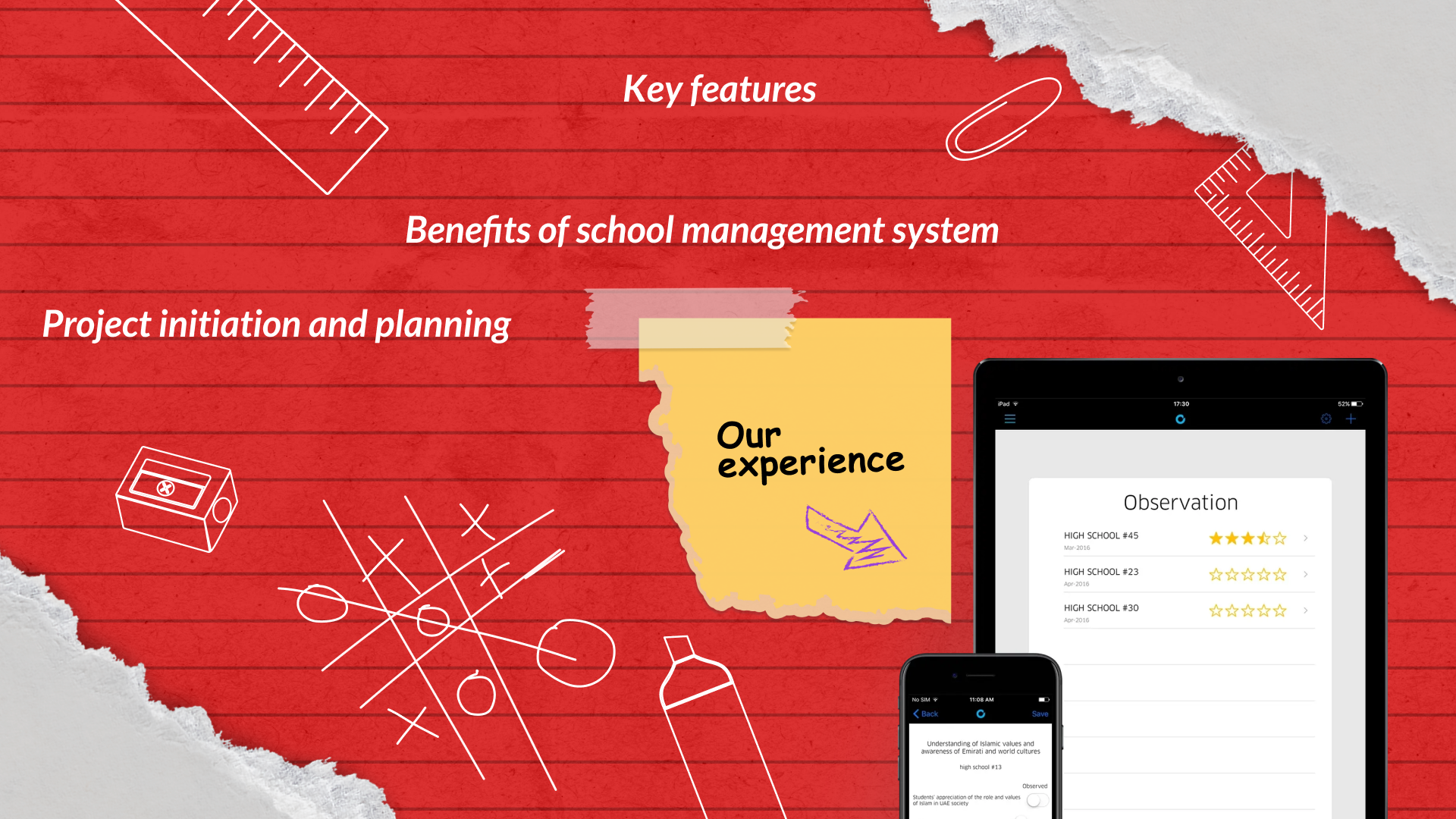What does a school need to keep everything running smoothly? Software that can practically handle all the day-to-day tasks on its own. A school management system is designed to manage a complex database using modern CRM technologies, packed with features and functions.
If you’re looking for tips on how to create a school management system, you’ve come to the right place. We’ll provide a step-by-step guide to help you get started with developing a school management system project. Here we go!
Benefits of a School Management System
With a cutting-edge SMS that offers a flexible schedule to accommodate everyone’s agenda, students now have more options than ever before. There are lots of benefits that come with a school management system’s development. Keep reading to explore each of these advantages in detail!
Learning Process Automation
Manual data entry? What a nightmare! Online school management software systems can automate everything to a large extent – whether it be maintaining diaries and class journals, or conducting online parent gatherings. With SMS, both teachers and students can access lists of grades, schedules, instructional resources, and learning materials housed on a centralized platform.
Reduced Operating Costs
The costs associated with printing journals and other paper materials can be significantly slashed down by storing all data on a single digital platform. School administration can finally stop using paper and manage documentation electronically instead.
Enhanced Efficiency
A school management system software can help school personnel stay better organized, systematic, and methodical in the way they manage schedules, keep track of attendance, and run reports. With a robust SMS in place, they can spend less effort fulfilling daily tasks that can now be achieved by the simple click of a button.
Easy Access
This piece of software provides access to a comprehensive database of school materials. The data gets updated on a regular basis, ensuring that all stakeholders — students, teachers, and parents have access to the latest information about the resources in their collection (subjects, lesson schedules, and test results).
Increased Communication
Such systems often have built-in messengers that help all parties achieve proper streamlined communication anytime, and from anywhere. Teachers can share real-time updates with the learners, who in turn, can post instant queries and ask for explanations.
Streamlined Fee Management
Fee collection processes typically produce lots of stress, and require precise attention for the calculations. School management software systems offer a friction-free experience for parents and administrative staff. The program ensures that fee payments are protected by a reliable payment gateway.
How To Build a SMS
When crafting a SMS, it’s crucial to thoroughly consider every facet of a school’s particular operations. If you’re looking for information on how to create an effective school management system, we’ve outlined a step-by-step process to guide you.
Project Initiation and Planning
It’s essential to start by having a solid foundation for the school management system’s project initiation and planning. This involves defining clear objectives, engaging with stakeholders to grasp their needs, conducting a feasibility study to ensure technical & financial viability, and establishing a well-defined project timeline with resource allocation.
Requirement Analysis
Moving into requirement analysis, the focus shifts to gathering detailed school management system requirements for each module, prioritizing features based on their significance, and meticulously documenting everything, including user stories and use cases.
UI/UX Design
UI/UX design focuses on creating user-friendly interfaces, ensuring that search results are visible on a single screen, important features are easily accessible and responsive, personalized results are provided based on user categories, and data is presented in an organized and visually appealing manner without clutter.
Module Development and Integration
This stage includes creating specialized modules for user management, academic management, student information, communication, financial management, administrative tasks, and security measures.
Within these modules, functionalities such as user profiles, class scheduling, student records, communication channels, financial tracking, staff management, and security protocols are implemented. Integration of these modules ensures smooth data flow and user experience.
Testing and Quality Assurance
System testing and user acceptance testing are necessary to ensure the overall functionality meets user requirements. Conduct unit testing to ensure each module functions correctly, and integration testing to confirm seamless communication between modules. In order to verify data security and compliance with regulatory standards, security and compliance testing should also be conducted.
Performing post-deployment smoke testing and sanity checks ensures that the SMS functions properly in the production environment. Regression testing helps verify that new changes after updates or bug fixes have not negatively impacted existing functionalities.
Deployment
It’s crucial to provide user training for new features and also communicate the deployment schedule & changes to all stakeholders beforehand. A helpful way to ensure a smooth transition is to implement a phased rollout strategy, introducing new features to a subset of users before the official release.
Post-Launch
After deployment, closely monitor the system’s performance and make any required adjustments to code, queries, or infrastructure configuration. Monitor server load, response times, and resource usage to detect and resolve any issues hindering the system’s performance.
It’s also important to provide go-live support to help users quickly resolve any issues that may disrupt their work with the system.
Maintenance and Updates
Conducting regular system checks and maintenance, implementing timely updates for new features and security patches, and integrating user feedback are key steps in ensuring the system’s reliability, security, and continuous improvement to meet user needs.
Key Features of a Powerful School Management Platform
A modern school management web application contains a lot of features including finance management, student management, resource management, academic management, and more. If you are contemplating the development of an SMS — check for these integral components:
- User authentication and authorization. Secure login procedures and permission settings are crucial. The system should incorporate role-based access control, guaranteeing that students, teachers, administrators, and parents can only access information and features pertinent to their roles
- Curriculum management. This feature enables the design and management of course curricula and educational content. It involves overseeing course descriptions, prerequisites, and credits
- Gradebook and assessment management. An SMS should have digital grade recording and tracking of student performance. It should support various assessment types and offer robust tools for analyzing results
- Student enrollment and tracking. The system enables monitoring and reporting on student behavior and discipline records. It includes functionalities such as class registration, attendance tracking, and monitoring academic performance
- Parent-teacher-student portals. There should be dedicated communication and information-sharing portals featuring instant messaging, forums, and video conferencing capabilities
- Homework and assignment management. The SMS should feature a dynamic platform for assigning, submitting, and reviewing homework
- Calendar and event management. The school management system software should incorporate a digital calendar for managing school events, holidays, and important dates, integrating with other calendar services as needed
- Fee and billing management. Managing tuition fees, billing, and payment tracking within the EMS can streamline financial processes for both the institution and the students
- Reporting and analytics. The system needs tools for generating financial reports on academic performance and enrollment statistics across a multitude of metrics, along with analytics to take data-backed decisions
- Third-party tools. Integrations enhance the functionality of a school management system by connecting it with various educational tools and software such as Google Docs, Zoom, and Microsoft Teams
- E-learning and digital content. Another valuable feature in any SMS platform is access to digital educational resources and e-books
- Mobile app. Having a mobile version for accessing SMS features on smartphones and tablets is particularly convenient for users who need quick access or prefer to use it while on the go

How Can Redwerk Benefit You?
If you want to bring your school into the contemporary era of the 21st century, hire someone who can guide you through this process from start to finish.
Redwerk knows how to build a school management system with tailor-made features that streamline school operations and simplify lives of all stakeholders. From prototyping and UI/UX design to full-fledged software product development and ongoing support, we’ve got you covered!
We’ll develop a school management system software to perfectly meet your institution’s unique needs and align seamlessly with your processes. Discover how a school management web application can cater to your educational institute; just leave us a note!
Our Experience
Drawing upon our extensive experience in educational software development, we understand the intricacies of school management system development. We have a proven track record of helping educational institutes reach their goals. Here’s how we contributed to GEMS Education’s app development for school observers.

Redwerk developed a user-friendly UI/UX interface for efficient real-time note-taking. Our developers utilized a Django stack for rapid backend development with its admin UI, REST API capabilities, and ORM database support.
Our School Observation App handles large amounts of data, including photos and videos. We optimized performance with native iOS SDK and Realm for the database, leveraging our extensive experience in custom iOS app development.
Wrap Up
If you are having a hard time convincing school officials to invest in school administration and management systems, consider sharing this article with them. With Redwerk, you can transform your school into a completely digitized, highly efficient, interconnected, student & teacher-friendly institution.
Here’s to embracing the power of technology and turning your school management aspirations into a reality!
FAQ
Why is there a need for SMS in schools?
SMS helps streamline administrative tasks, reduces workload, minimizes human error, enhances communication with parents, and facilitates the school’s transition into a technologically advanced learning environment.
What are the core features of an SMS?
The platform should allow you to manage student information, attendance, grading, scheduling, finances, HR functions, and facilitate communication among all involved members.
Is it possible to migrate data from an existing system to a new SMS?
Yes, with expert guidance and support. A seamless data migration from existing systems to the new school management system is entirely feasible, without compromising your data integrity.
Is there a difference between an SMS and an LMS?
An LMS (Learning Management System) concentrates on strictly delivering and managing educational content & online learning. An SMS, on the other hand, focuses on the entire scope of school administration.
How to choose a company for SMS development?
To choose a company for SMS development, consider factors such as their experience in educational software, expertise in customizable solutions, adherence to data security standards, and client testimonials.
Learn how we helped GEMS Education
develop a school observation app
from inception-to-launch in just 3 months




